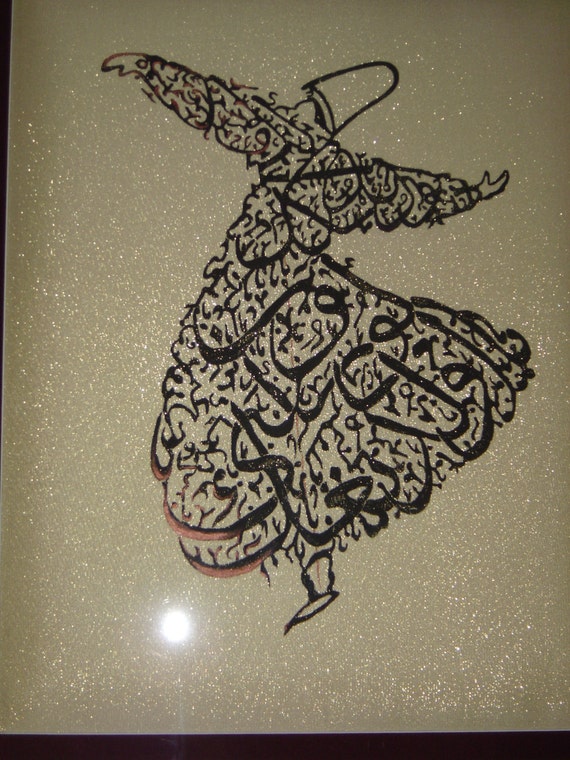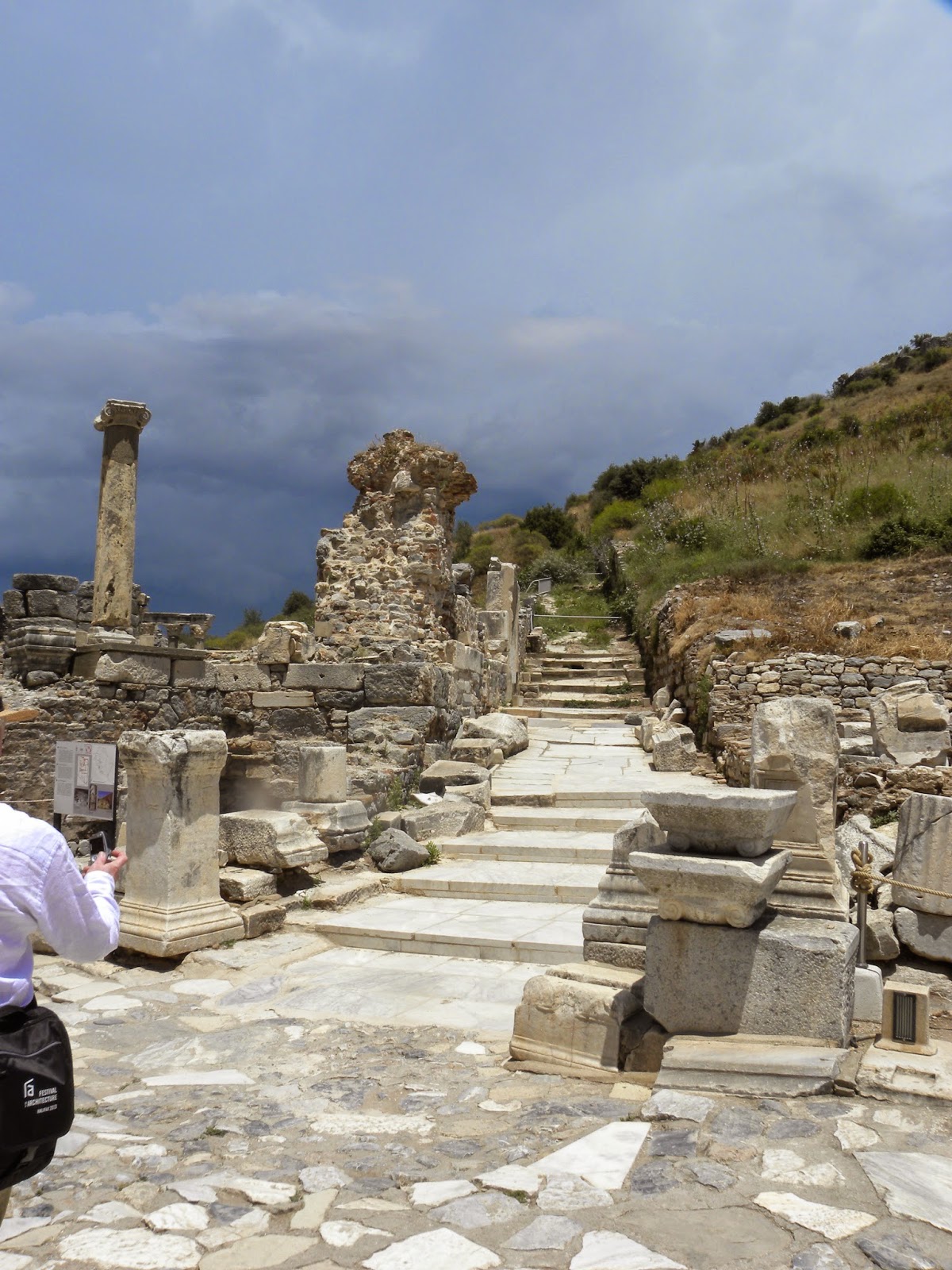It now resides on a small table that Lucas made for me (or maybe I stole it from him) while he was in Junior High School. This table is in my studio and is in pretty constant use.
The other view is just as nice, if I do preen so myself. I need to get a glass top to protect it from spills, this is so frail, it would not withstand a washing of any kind.
Scuffing more leaves while walking through the cemetery on our way to the library, Steve and I discussed the merits of different kinds of fallen leaves. While Japanese Maples look gorgeous at this time of year, with their various shades of reds and greens, the leaves dry up before they hit the ground and fall to pieces. Sycamore leaves are giant and if wet, pretend they are concrete and refuse to budge. Yellow Maple leaves are both lovely to look at while scuffing but become slippery when wet. Oak leaves are miserable to rake, wet or dry, but they make the best scuffing leaves of all. They tend to get a slight bend in them when they dry and do not break apart as readily as the maples leaves. They last longer, and due to the slight curve, they fly up in the air very nicely. Maples for colour, Oaks for scuffage.
On the cemetery walk we spied these purple berries on what we thought was Sumac trees. Now we aren't sure, because these don't look at all like Stag Horn Sumac berries, not as red or as fuzzy. These are a deep purple and squish like a blueberry. The sun was shining through them as they dried from a rain. Steve brought a fallen bunch home as a surprise. They look beautiful amongst the grass plant I brought indoors.
Now, about that Turkey trip. Can you believe I am just getting to the half way point of the photos. Steve said there are 3 gigabites (what ever those are) of photos. You really are seeing a very small fraction.
The Whirling Dirvishes are a religious group I studied in University as part of my anthropology section in Dance. We studied them for the trance dancing rather than the religious content. I was so excited to be seeing this in person. We climbed into a little loft balcony that surrounded the room on three sides. We sat around the ballistrade to watch. This is sacred dance and as such, I refused to take any photos of it. The theology is that as the dancer whirls and loses them selves in the spinning while keeping upright AND on the same spot. They are in direct communication with Allah or God. The upraised arm is the conduit between the human and the Divine, the lowered outstretched arm is the conduit between the human receptacle and his community who are waiting for the Divine Message. This dance is reserved for men.
This is the small domed ceiling in the recently restored mosque.
Here the men pray before the dancing begins. In the top upper corner you can see the backs of three women who are praying towards Mecca. Just under the balcony where the women are standing, are the instruments of the musicians and that narrow walkway is where the singers will stand. These are regular folks of the community. Sitting or standing is equally used, depending on the time of day. There is a time of day when everyone stands together to pray in unison. The little stage to the upper left is where the males guests can sit. The curved arch at the centre of the room is the place where the Imam stands or kneels or bows.
Small pencil sketch by me.
This is the Imam in formal garb at the conclusion of the ceremony, wrapping things up with a prayer.
 |
| A Rumi painting from Google Images. |
| Google images, artist unattributed. |
Enough of that, let's move on to Ephesus at last. No religious experiences going on here, rather sun stroke, music and painting.
Near to the entrance is an upper street of columns and a small amphitheater. All constructed or more accurately, reconstructed by 19th century Europeans who thought they knew how it should all look, the columns and seats are more or less where they should be, but there is a lot of infill and romanticism involved. Due to time constraints, we had to rush past this.
I was paying attention to the guide. It is devilishly difficult to balance a sketchbook, water colours, water, look like you are listening to the paid guide and do what you really want to do, which is just be where you are.
I don't recall what this was for. One of those women who bear the weight of a building on her head and had some role in myth as well, maybe? Or maybe it's a man, since there aren't any bare breasts and it looks like a lion's head is being held? Rush on to the next stone.
OK, this was cool. This is the original floor of a merchants home. All mosaic, some mythical, some imaginary, some related to business. The colours have bled out. I'm not sure why it isn't under a protective awning but then... I don't run the place, do I? I liked this because it gave a sense of real scale to the site. All the hills you see up in behind the first photo and others are un-cleared residential parts of the city. We are walking down the main road and it is huge. And long. This home helped us to grasp just how densely packed the city was.
It is likely that I am wrong, but I think this is a side street, going up into the residential areas.
We have bypassed the Library of Alexandria, most annoying, because some people just wouldn't keep with the group and we lost time looking for them, while they had disappeared into the library. The irony. Steve had dragged his banjo through the entire day and the hot cobbled street so that he could play at the amphitheater that is really an amphitheater. He is playing and singing three songs with his group of singers. They could be heard quite clearly right up to the back of the structure. I need to find a picture of this. Steve was busy playing and I sat down and did a painting of them in performance.
Steve's the one in the middle with the banjo, of course.
This is the far back right hand side of the amphitheater. The immediate right is another bank of seats and the same across the stage. Those fellows are about one quarter of the down, if you can figure out the scale from that.


















great post and fabulous images. nice to see your 'hanky' cloth again.
ReplyDelete